Lyon Landmarks and Monuments
(Lyon, Rhône Alpes, France)
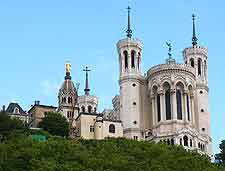
Lyon's distinctive skyline is crammed full of landmarks and monuments.
Whilst many of these date back many hundreds of years, some of them are more recent creations.
Landmarks around the city of Lyon include everything from fountains to churches, Roman ruins to spectacular towers, and even wall murals designed to trick the eye.

Basilique Notre-Dame de Fourvière
Address: Fourvière Hill, Lyon, France, FR
Tel: +33 04 7825 8619
Nicknamed 'the upside down elephant', this 19th-century church is one of Lyon's most distinctive landmarks. Its architecture is a rather strange mix of architectural styles, including medieval, oriental and neo-classical influences. Tours take in a visit to the basilica's Tour de l'Observation, where visitors are rewarded with splendid views over the whole of Lyon. The crypt is also open to the public.
Open hours: daily, 10:00, 12:00, 14:00 and 17:00 - open for tours
Admission: free; charge for observation tower visit
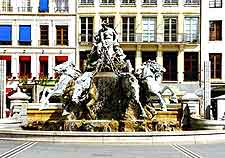
Bartholdi Fountain
Address: Place des Terreaux, Lyon, France, FR
Tel: +33 04 7238 8190
The centrepiece of Lyon's Place des Terreaux is its eye-catching 19th-century fountain, designed and built by Frédéric-Auguste Bartholdi. Bartholdi is famous for having created New York's Statue of Liberty. Contemporary fountains and illuminations have more recently been added, making this a pleasant place to stroll both during the day and in the evening.
Open hours: daily
Admission: free
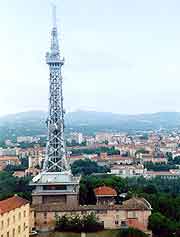
Tour Métallique
Address: Montée Nicolas-de-Change, 69005, Lyon, France, FR
Tel: +33 04 7277 6969
Although it is no longer possible to visit inside this tower, its restaurant and lift now being closed to the public, this remains one of the city's most distinctive and unmissable landmarks. Built just four years after the Eiffel Tower in
Paris, there are obvious comparisons to be made. Lyon's version of the famous Parisian attraction is smaller, at 80 metres / 262 feet in height, and is nowadays used as a television relay station.
Open hours: daily
Admission: free

Lyon Opera House
Address: Place de la Comédie, Lyon, France, FR
Tel: +33 04 7200 4545
This fine 18th-century building was built in the neo-classical style to accommodate Lyon's growing interest in operatic works. Lyon's love of opera has survived the centuries and, in 1983, work began to allow larger audiences and orchestras to be accommodated. Its original structure and facades have been retained. A tearoom and restaurant are open to the public.
Open hours: daily - 11:00 to 19:00; Saturday only, for tours - 13:00 (book through Lyon's Tourist Office)
Admission: charge
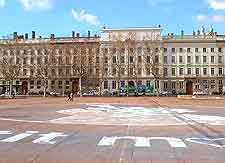
Place Bellecour
Address: Place Bellecour, 69002, Lyon, France, FR
This square is truly vast. Laid out in the 17th century, it is distinctive for its surface- covering of bright red sand. Pride of place in the square is a statue of the French king, Louis XIV, which is a much favoured photo opportunity for many. The Place Bellecour has become a popular meeting place.
Open hours: daily
Admission: free
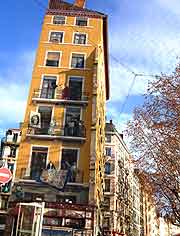
Fresque des Lyonnais
Address: Rue de la Martinière / Quai de la Pêcherie, Lyon, France, FR
Look up at the building on the corner of Rue de la Martinière and Quai de la Pêcherie and you might have a surprise. Twenty-five faces will look back at you. The seven-storey high wall mural showcases some well-known and less well-known figures from the city's past. Other huge murals can be found in Lyon, including one on its public library and 25 painted on apartment blocks in the acclaimed housing estate designed by Lyonnais architect, Tony Garnier.
Open hours: daily
Admission: free
Traboules de la Croix Rousse
Address: Pentes de la Croix Rousse, 69004, Lyon, France, FR
'Traboules' are Lyon's narrow passageways that connect the densely packed streets of its Croix Rousse district. Originally, they were built as short cuts to allow the area's silk workers to move quickly around the area, without getting their bolts of cloth wet. Today, they lend a real air of mystery as visitors seek to discover where all those secret steps and alleys lead. Whilst some are only accessible to residents, many remain open to the general public. More of the city's traboules can be found in the Vieux Lyon district.
Open hours: daily
Admission: free
 Lyon's distinctive skyline is crammed full of landmarks and monuments.
Lyon's distinctive skyline is crammed full of landmarks and monuments.




